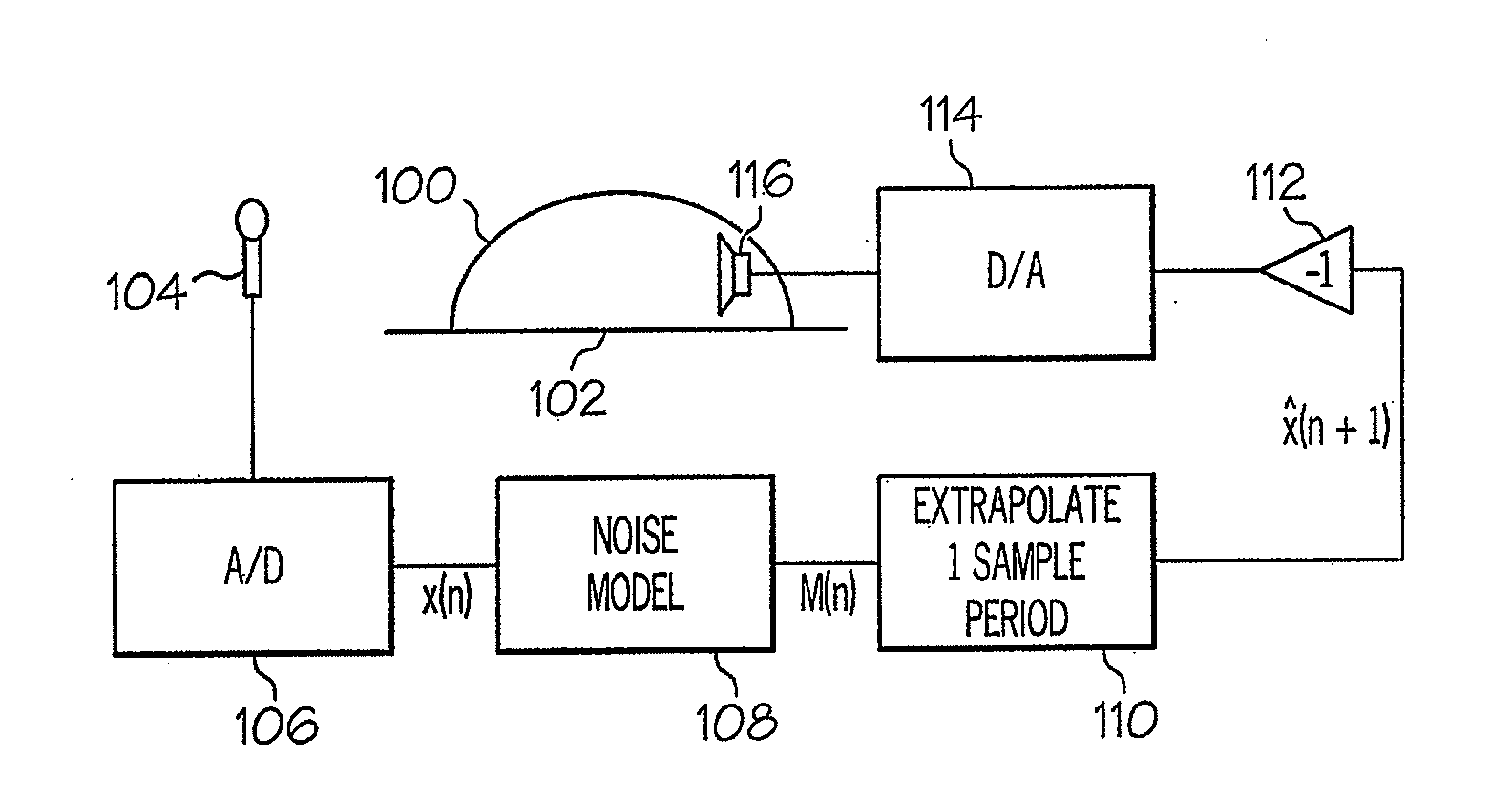Active Noise Cancellation Using a Predictive Approach
- Summary
- Abstract
- Description
- Claims
- Application Information
AI Technical Summary
Benefits of technology
Problems solved by technology
Method used
Image
Examples
Embodiment Construction
[0075]The present invention is particularly shown and described with reference to noise control in aviation headsets, an area of great importance in active noise cancellation applications, but it will be understood by those of ordinary skill in the art that the principles described here are also applicable to active noise control in other areas, including the control of noise in a region of free space not bounded by physical structures such as the walls of a headset dome. The active noise cancellation can be applied to headsets, helmets and instances where speakers are close to a head.
[0076]In the present invention, the general approach is to construct a mathematical model of the noise process to be cancelled out and to extrapolate that signal forward in time. The extrapolated signal is inverted (multiplied by −1) and applied to loudspeakers, or other sound production means, to cancel out the noise signal in the volume in which active noise cancellation is desired. The mathematical ...
PUM
 Login to View More
Login to View More Abstract
Description
Claims
Application Information
 Login to View More
Login to View More - R&D
- Intellectual Property
- Life Sciences
- Materials
- Tech Scout
- Unparalleled Data Quality
- Higher Quality Content
- 60% Fewer Hallucinations
Browse by: Latest US Patents, China's latest patents, Technical Efficacy Thesaurus, Application Domain, Technology Topic, Popular Technical Reports.
© 2025 PatSnap. All rights reserved.Legal|Privacy policy|Modern Slavery Act Transparency Statement|Sitemap|About US| Contact US: help@patsnap.com



